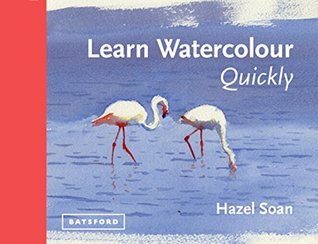More on this book
Kindle Notes & Highlights
Learn Watercolour Quickly: Techniques and painting secrets for the absolute beginner (Learn Quickly)
by
Hazel Soan
The appearance of the watercolour is more important than the content it conveys
Always keep it in mind that you are using the subject to paint a watercolour rather than watercolour to paint the subject.
‘Less is more’ should be the watercolourist’s motto and being succinct often takes more preparation and care than being long-winded.
Do not be afraid to experiment even though you may waste paper in doing so, and don’t be afraid to break the rules. Most great discoveries are made by mistake,
Creation and failure are inescapably linked: without doubt, among your successes there will be failed watercolours. These are part of your creative archive and are just as important as the paintings you come to cherish: get used to it, don’t let it get you down, just carry on.
For this you need a softish pencil (2B or 4B) or a graphite stick. It does not matter if pencil marks show under a watercolour but, if corrections are to be made before painting, use a putty rubber rather than an ordinary eraser so that you do not scuff the surface of the paper.
watercolour, the white of the paper represents the light, so it is a very important factor in a painting. The watercolourist leaves highlit areas untouched, tints light areas and paints the shade, usually building from light to dark tones.
line, shape, light and shade (known in ‘art-speak’ as tone or value), perspective, proportion and colour. A picturesque view does not necessarily make a good painting unless there is a convincing pattern of light and shade going on, or an interesting composition of shapes and lines.
Lines that lead the eye into the painting or towards the focus • Shapes that vary and make interesting brushmarks • Light that enlivens and breaks up areas of darkness • Shade that suggests form, offers a touch of ambiguity and provides areas of peace • Perspective to imply depth, distance and narrative • Proportion to enhance scale and a sense of space • Colour that entertains the eye
Don’t try to copy your subject exactly; it is the inspiration for your watercolour and you are under no obligation to mimic it. A painting has a life of its own; it is a new creation and you can change anything in the subject to suit your watercolour. Oscar Wilde puts it perfectly: ‘Art begins where imitation ends.’


